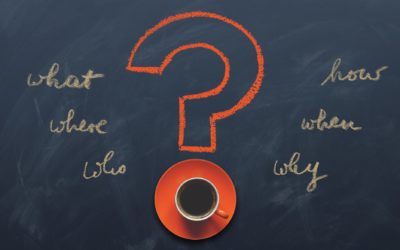Most people who set goals for themselves have clear ideas about what actions are necessary to achieve those goals. Often, however, the actual behavior deviates from the required behavior, so that the achievement of the goal is jeopardized. Many people allow themselves to be led astray by their emotions and later regret their impulsive actions or lack of discipline. This raises the question of how people (can) regulate their own behavior and to what extent this affects their own performance and individual success. This post will look at the components that make up the process of self-regulation, what is meant by the term in practice, and what implications can be derived from it for one’s own everyday life.
Disclaimer
All content and statements within the blog posts are researched to the best of our knowledge and belief and, if possible, presented in an unbiased manner. If sources are used, they are indicated. Nevertheless, we explicitly point out that the content should not be understood as facts, but only as a suggestion and thought-provoking ideas for the own research of the readers. We assume no liability for the accuracy and/or completeness of the content presented.
The term self-regulationis not only used many different areas within psychology, but is also increasingly being considered in business and education. Self-regulation includes both control by the self and control over the self. However, it is not only applicable to conscious processes, but is also used in explaining subconscious control mechanisms. As an important component of the psychological understanding of how people behave, self-regulation receives a great deal of attention in the scientific literature. Vohs & Baumeister (2004), for example, argue that a variety of societal problems – from obesity to the use of addictive substances – can be traced to aspects of self-regulation.¹ The high volume of scholarly work on this topic, as well as its division among a variety of different fields, means that it is nearly impossible to find a single definition for the term self-regulation. As an example, the American Psychological Association (APA) defines the term as follows:
„…the control of one’s behavior through the use of self-monitoring (keeping a record of behavior), self-evaluation (assessing the information obtained during self-monitoring), and self-reinforcement (rewarding oneself for appropriate behavior or for attaining a goal).”²
Although there are many definitions and understandings of the complex construct of self-regulation, there is comparative agreement that self-regulation consists of several components. These include a form of observation, evaluation, and implementation or reward in the context of one’s own behavior. If one follows in this context for example the understanding of Bandura (1991), then the process of self-regulation can be divided into the observation, the evaluation and the reaction. Within the framework of observation, not only the performance of the respective person is relevant, but also the circumstances under which the performance came about, as well as the short-term and long-term consequences that resulted from one’s own action. In addition to these aspects, internal processes such as thought patterns and emotional reactions must also be considered. The insights gained from observation can subsequently be used in the goal-setting process by setting adequate goals or evaluating goals already set in terms of their achievement. However, the findings alone are only the first step and are only effective to a limited extent. Rather, personal standards are needed against which the observed behavior can be measured and aligned. However, such standards, which are needed in the evaluation process, cannot be imposed from the outside, but are the result of a lengthy process and are (especially) at the beginning often inconsistent in their display to the outside. The existence of personal standards is important because they are the basis for the orientation of one’s own behavioral patterns. Behavior that is observed is evaluated against the defined standards and can subsequently be realigned as needed to promote achievement of goals. Appropriate incentive structures are also an important part of the response process, as they can have a motivating character as a form of self-reward and promote goal-oriented action. It should be noted, however, that rewards must also be linked to a clearly defined level of performance in advance, rather than being paid out regardless of actual results.³
It can be assumed that most of the problems will not occur within the observation process. Even if people repeatedly misjudge situational influences or causal links in relation to their own successful actions, this area should tend to involve fewer difficulties. As a rule, one’s own behavior can be observed well and, with a little practice, the assignment of internal control mechanisms should not pose a significant challenge. However, it is important to be honest and admit one’s own emotionality. Acting according to personal standards already seems more difficult because, as described above, these are the result of a long-term process. People who pursue ambitious goals should therefore invest in the development and formulation of such standards at an early stage and consistently align their actions with them. The disciplined behavior could then lead to a certain automation, so that the correct or goal-oriented action is intuitively realized under various situational influences. In addition, it is conceivable that suitable standards, together with established behavioral patterns, could lead to individuals no longer succumbing so easily to temptations, but pursuing their goals in a more disciplined manner.
Personal standards are not only relevant to one’s own performance, but can also be formulated in terms of one’s own moral convictions. In this context, the self-regulation process appears to be an essential component in the formation of one’s own character. There is no question that high achievement is in itself a positive trait. Nevertheless, it can be argued that one’s character, as well as one’s moral convictions, are perhaps even more important in the course of personal development. The standards by which one’s behavior is measured arise not only from the individual’s own beliefs and perceptions, but are also shaped by the reactions of others. Thus, each person has a certain responsibility when interacting with others, as his or her behavior may influence the personal standards of the other person. This could be an important implication especially for interactions with children and adolescents, since the reference values for evaluating one’s own behavior are not yet consolidated in younger persons or may not even have been consciously created yet. The self-regulatory process could thus be divided into two main areas. On the one hand, there is control, as the monitoring function in the process helps to ensure that one’s own behavior actually leads to the desired results. On the other side is alignment, as the guiding function of the process supports the formation of appropriate standards against which one’s behavior is measured and evaluated.
Self-regulation can be described as a kind of ability that can be learned and enables people to align their own behavior with predefined goals or to evaluate it with regard to predefined goals. Essentially, the process of self-regulation can be divided into three central components – regardless of the explicit understanding: the observation of one’s own behavior, the evaluation of behavior against personal standards, and the (goal-oriented) adjustment of behavior or reward for adequate behavior. Self-regulation has both a guiding and a controlling function for the individual. People who are able to keep their behavior appropriately constant under various situational influences and orient themselves to self-imposed standards can pursue more ambitious goals and ultimately achieve them.
¹ Vohs, K. D., & Baumeister, R. F. (2004). „Understanding self-regulation: An introduction.” In Handbook of self-regulation: Research, theory, and applications, edited by R. F. Baumeister & K. D. Vohs, 1-9. New York: The Guilford Press.
http://ndl.ethernet.edu.et/bitstream/123456789/28342/1/162.pdf.pdf.
² American Psychological Association. N.d. “APA Dictionary of Psychology”. APA. Accessed May 16, 2021.
https://dictionary.apa.org/self-regulation.
³ Bandura, A. (1991). Social cognitive theory of self-regulation. Organizational behavior and human decision processes, 50(2), 248-287.
https://doi.org/10.1016/0749-5978(91)90022-L.



